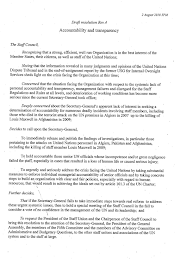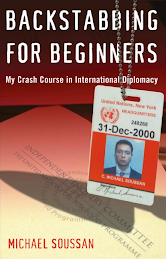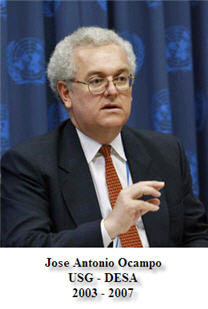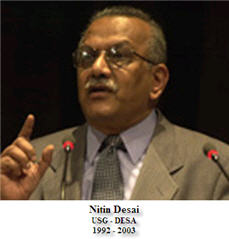By JONATHAN M. KATZ, Associated PressSat Oct 30, 1:16 am ET
PORT-AU-PRINCE, Haiti – Hundreds of protesters who blame U.N. peacekeepers from Nepal for Haiti's widening cholera epidemic marched on a rural military base Friday to demand the soldiers leave the country.
Demonstrators waving tree branches and carrying anti-U.N. banners walked from the central plateau city of Mirebalais several miles to the gates of the base perched above a tributary of the Artibonite River — a waterway identified by health officials as a conduit for the infection.
The protesters chanted "Like it or not, they must go" as the Nepalese soldiers and other U.N. peacekeepers remained inside.
Cholera has sparked widespread fear in Haiti, where it was unknown before the outbreak was first noticed by authorities Oct. 20. As of Friday morning, more than 4,700 people have been hospitalized and at least 330 have died, according to the U.N. Office for the Coordination of Humanitarian Affairs.
There has been no scientific conclusion on the origin of the epidemic, which became evident when dozens of patients began dying with high fevers and watery diarrhea at a hospital in the town of St. Marc a few miles from the last stretch of the river.
Experts say the disease was likely imported. Until this month there had not been a diagnosed case of cholera in Haiti as far back as records go in the mid-20th Century, said Claire-Lise Chaignat, head of the global task force on cholera control at the World Health Organization. The disease is pandemic in parts of Africa and Asia.
Speculation among Haitians is increasingly centered on the Nepalese peacekeeping base near Mirebalais, much of it being stoked by politicians including the town's mayor — a Senate candidate — ahead of the Nov. 28 national elections.
Cholera is endemic in Nepal and the country suffered outbreaks this summer. The current troop contingent arrived in shifts starting Oct. 9, after the outbreak in their home country and shortly before the disease broke out in Haiti. Cases have been concentrated down river along the Artibonite.
The U.N. Stabilization Mission in Haiti, known as MINUSTAH by its French initials, is investigating the area around the base for signs of cholera, The Associated Press learned after happening on crews testing the site Wednesday. The results of those tests are still pending.
None of the Nepalese soldiers based there have been tested for cholera because none presented symptoms, mission spokesman Vincenzo Pugliese said Friday. He said media reports published elsewhere saying that all soldiers had tested negative for the disease were incorrect.
"By none of them presenting the symptom of the cholera there was no need to do another test," Pugliese told AP. "It's not the same as saying they were all tested negative because none of them had to be tested." The soldiers have not been tested for cholera since the outbreak, he said.
But about 75 percent of people infected with cholera do not exhibit symptoms and can still shed them into the environment and infect others for two weeks, Pan American Health Organization deputy director Jon Andrus told reporters at a press briefing on Oct. 25.
The U.N.'s Medical Support Manual for peacekeeping operations lists neither diarrhea nor cholera on its list of conditions precluding peacekeeping service.
The mission had initially responded to rumors of the base's involvement with a Tuesday statement saying that sanitation around the base was in line with the standards set by the U.S. Environmental Protection Agency and the United Nations.
But when Associated Press journalists visited Wednesday, they found open and cracked pipes behind the base, with U.N. military investigators taking samples. There was an overpowering smell of human waste, and a pipe leading toward a septic tank was leaking foul-smelling black fluid toward the river.
The waste is dumped across the street in open pits that residents, who live a few yards away, said often overflow into the Artibonite tributary running below. The contractor, Sanco Enterprises SA, says the pits are sprayed with bleach.
On Friday, protesters called on the Haitian government to kick out the Nepalese soldiers.
"The Nepalese brought this disease to the center of Mirebalais," said Ernst Exilume, a 25-year-old student. "We have no water to drink. We have no choice but to drink the water from the river."
International aid groups had made hygiene and the control of disease priorities after the Jan. 12 earthquake, especially as millions of Haitians found themselves homeless and living in tarp and tent settlements around the capital. Throughout the year banners imploring people to wash their hands have hung over streets and on walls.
Scientists from the CDC are retesting samples to determine the nature of the cholera strain at a molecular level, which could help pinpoint its origin, and hope to have results to share with Haiti's Ministry of Health sometime over the weekend, CDC spokesman Tom Skinner told the AP.
Tests can indicate the areas of the world where this cholera strain has been found, but the results may not reveal its national origin or how it got to Haiti, he said.
The U.S. agency is not specifically investigating in the area of the base or taking environmental samples, another CDC spokesman, David Daigle, said.
"For sure it is going to be important to know where the germ came from. I don't know if we are going to get an answer," Chaignat, the WHO official, said.
___
Associated Press reporters Pierre Richard Luxama in Mirebalais, Colleen Barry in Geneva and Michael Stobbe in Atlanta contributed to this story.






















No comments:
Post a Comment